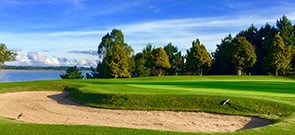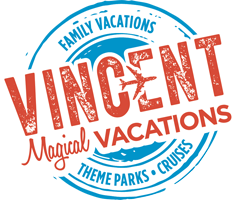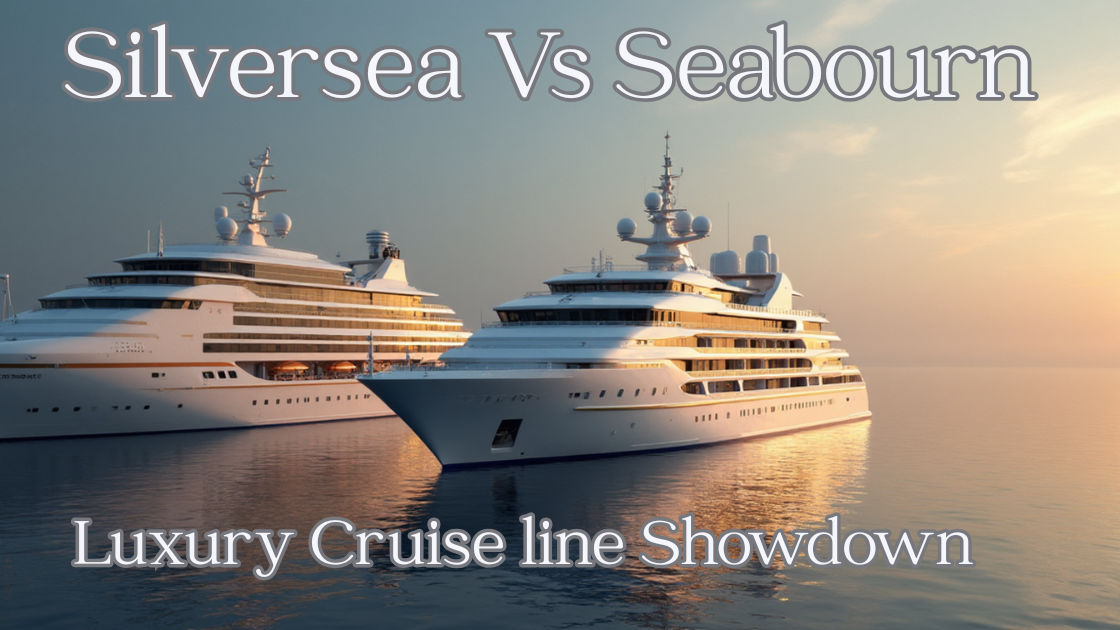We recognize that Disney vacations are not just an investment, but often the highlights of our lives, and we take that responsibility seriously. We want to ensure you have the best vacation experience.
Interested in a job in travel? Click here to learn: How to Become a Disney Travel Agent
Overview
Introduction

Panama has good potential as a vacation spot with its mountains, protected rain forests, fascinating wildlife, indigenous peoples, beaches and coral reefs, and opportunities for deep-sea fishing, scuba diving and surfing. Visitors can see historic sites and admire Panama's Spanish-colonial structures and Amerindian cultures.
The Panama Canal is another site of interest to many travelers, as it is among the most impressive engineering accomplishments of the 20th century. It is also a big attraction for passengers aboard the cruise ships and tour boats that float through the Canal. Landlubbers can watch a wide variety of vessels, among them some of the world's biggest ships, move through the giant locks. Recent construction includes building two new sets of locks on the Atlantic and Pacific coasts with accompanying channels along with expanding the width and depth of existing channels to permit passage by more and even bigger ships.
Panama has evolved its appeal for visitors since taking the reins of the Panama Canal in 1999. Travel infrastructure is improving, with an expanding offering of luxury accommodations, ecolodges and boutique-hotels. Roads in Panama are some of the best in Central America, and its international airport is a bustling air travel hub .
In numerous ways, Panama is more appealing as a travel destination than neighboring Costa Rica. And because Panama still sees fewer visitors than Costa Rica, travelers will find lower prices, fewer crowds and the feeling that they're discovering a well-kept secret.
Geography
Panama is a narrow country of mountains, rain forests and flat coastal lowlands—it's only 50 mi/80 km across at the narrowest point (along the canal) and 120 mi/193 km at its widest. The Panama Canal roughly cuts the country in half. The canal's creation resulted in extensive flooding and the formation of Lago Gatun, an enormous artificial lake (at the time, the world's largest) with numerous islands.
Panama forms a land bridge between North and South America but doesn't lie north-south. It actually stretches east and west in an S shape. (The country's shape also means that a ship moving from the Caribbean to the Pacific leaves the canal farther to the east than it enters.) A ridge of mountains—extremely rugged in the west and gradually narrowing eastward—forms the nation's spine. From the top of Volcan Baru, Panama's highest mountain (11,400 ft/3,475 m), it's possible to see the sun rise over the Pacific and set in the Caribbean.
On the Caribbean side, two archipelagos—Bocas del Toro and the San Blas Islands—boast gorgeous white sands and fine coral reefs. The greatly indented Pacific coast also has archipelagos offshore. Whales frequent the waters off remote Archipielago de Las Perlas, now being developed for tourism, and Isla de Coiba, a forested isle being touted for ecotourism. Darien province, in the extreme east of the country, is a rugged region smothered in thick rain forest and cut through by sinuous rivers fed by torrential rains.
History
The first signs of human settlement in Panama are thought to be about 10,000 years old. Seven different Native American cultures can be identified today: The three largest are the Embera of the Darien jungle area, the Kuna of the San Blas Islands, and the Ngobe-Bugle of the western provinces of Chiriqui and Bocas del Toro.
Spaniard Rodrigo de Bastidas sailed along the Caribbean coast of Panama in 1501, and Columbus arrived in 1502. Despite dropping anchor in the Bay of Portobelo on the Caribbean side, he never realized how close he was to the Pacific Ocean. In 1513, Juan de Balboa landed in the area, hiked across the Darien jungle and became the first European to see the Pacific from the New World.
The Spanish used Panama as the transshipment point for treasure and goods being sent between the west coast of South America and Spain. Mule trains laden with pilfered treasures hauled the booty along the Camino Real (Royal Road) and Camino de Cruces, linking the town of Panama, on the Pacific, to the port of Portobelo. As a result, buccaneers desiring Spanish loot set their sights on the area. By the 1700s, pirate attacks made it too dangerous to continue using the route, and ships started sailing around Cape Horn. Panama went into decline.
In 1821, Panama declared its independence from Spain and joined with Venezuela, Ecuador and Colombia to form Gran Colombia. When that union split up, Panama remained a part of neighboring Colombia. The California gold rush of the mid-1800s brought unprecedented traffic across the Panamanian isthmus. Thousands died of yellow fever on the exhausting passage along the overgrown route of the Camino de Cruces. The Panama Railway was thus built across the isthmus. Once on the Pacific side, prospectors would take boats up the coast to the goldfields (a far easier journey than crossing the U.S. by land).
In the 1880s, following his success in building the Suez Canal, Frenchman Ferdinand de Lesseps founded a company to construct a canal across the isthmus. After losing 22,000 workers to disease and seeing investors go bankrupt, the scandal-plagued enterprise sold the rights to the U.S. The Colombian government refused the terms demanded by the U.S. government to build, however, which set the stage for Panama's split from Colombia.
In 1903, revolutionaries on the isthmus—inspired and backed by the U.S.—declared Panama an independent country and defeated Colombia's attempts to retake the territory when the U.S. sent a gunboat to thwart the landing of Colombian troops. These actions cleared the way for the U.S. construction of the canal, which was initiated in 1906 and completed in 1914.
The U.S. presence in Panama continued after the completion of the canal, with its complete control over a 10-mi-/16-km-wide Canal Zone, where it maintained more than a dozen separate military bases. In addition to stationing troops in the country to protect the waterway, the U.S. frequently intervened to control political events there—most dramatically in December 1989 when the U.S. launched a full-scale military invasion (Operation Just Cause) to topple brutal dictator Manuel Noriega.
On 31 December 1999, the U.S. relinquished control of the canal to Panama. All U.S. military forces withdrew, and the former military bases were converted to civilian use. President Martin Torrijos, son of Omar Torrijos, the benevolent dictator-president who, in 1977, negotiated the Carter-Torrijos Treaty granting Panama full control of the canal, left office in September 2009.
His successor was Ricardo Martinelli, a wealthy businessman, who in turn was succeeded in 2014 by Juan Carlos Varela, a liquor magnate who campaigned successfully on a promise of more government transparency and less corruption. In 2019, Laurentino Cortizo of the Democratic Revolutionary Party was elected president.
Snapshot
The foremost attractions of Panama include the Panama Canal; the tropical rain forests of Darien; world-class deep-sea fishing, scuba diving and surfing; the Bocas del Toro archipelago and San Blas Islands; the mountain resorts of Chiriqui; the old quarter of Panama City and Amerindian culture; the colonial villages of the Azuero peninsula; the gorgeous beaches of the Archipielago de las Perlas.
Those wishing to experience a variety of natural attractions or to see a magnificent man-made one (the canal) will enjoy Panama, as will those seeking colonial-themed old cities (Casco de Viejo, Panama la Vieja and the villages of Azuero), and a capital city that is modern and cosmopolitan. Those who require a wide selection of deluxe resorts or who have little interest in tropical scenery and wildlife will be less satisfied.
Potpourri
The smallest toll ever collected on the Panama Canal was US$0.36, paid in 1928 by travel writer Richard Halliburton, who swam the canal end to end.
Thousands of workers from 97 different countries helped build the canal, but the island of Barbados sent the most. More than 25,000 laborers died (most of yellow fever and malaria) in the combined French and American construction efforts.
More species of birds—about 950—have been recorded in Panama than in the U.S. and Canada combined. Be sure to take binoculars so that you can see them. Panama is the best place in the world to see resplendent quetzals and the harpy eagle, the world's largest raptor.
Sir Francis Drake, the English pirate licensed by Queen Elizabeth to maraud against Spanish New World possessions, died of dysentery while preparing to attack Portobelo. He was buried at sea in a lead coffin that has never been found.
The tamborito is a traditional dance of Panama. It is usually performed by men in white shirts and pants with red cloth belts and straw hats (sombrero montuno), and women in ankle-length dresses called polleras.
U.S. residents of the former Canal Zone call themselves "Zonians."
The world-famous Panama hats are made in Ecuador, not in Panama. They got their name when popularized by workers on the Panama Canal and, most notably, by U.S. President Theodore Roosevelt who was photographed working a steam shovel at the canal while dressed in a white suit and Panama hat. Panama's own straw hats are of a different style.
Location
Unlike many other places that cruise ships visit, Panama isn't so much a destination as it is an experience. Although the country has two major port cities, what most cruise-ship passengers see of this Central American country is what's visible from the ship during a total or partial crossing of the Panama Canal.
Some ships do anchor near the San Blas Islands, off the northeast coast of Panama. But only a few small cruise ships visit the port cities of Balboa and Panama City (on the Pacific side) or Colon and Cristobal (on the Caribbean side). And a visit to Barra del Colorado Island, in the middle of Gatun Lake, is limited to ships operated by National Geographic Expeditions and Lindblad Expeditions.
The lack of shore visits is partly because of the limited tourist facilities in the ports. However, the Panamanian government is making an effort to improve facilities for tourism and providing incentives for private tourism-related ventures.
On the Caribbean, the city of Colon has two cruise-ship terminals: the small Colon 2000 facility solely for cruise ships, and an aged dock in the commercial freighter area (where overnighting passengers must contend with the noise of vessels being loaded). Colon 2000 can handle even the largest vessels and has duty-free shopping areas, restaurants and lounges.
Shore Excursions
Some cruise lines offer shore excursions as part of the canal transit, although these are not common. Typically, options include short tours of Panama City's historic Casco Viejo and Panama Viejo districts, plus Miraflores Locks, visits to Fort San Lorenzo or an Embera village, the fortresses of Portobelo and rides on the Panama Railway or the aerial tram at Gamboa Rainforest Resort. Note that visits to the San Blas Islands cannot be made on cruise ships.
Panama City has a mega-yacht marina at Isla Flamenco, on the Amador Causeway, although the facility is too small for cruise ships. It has restaurants and bars, plus taxi service into the city.
Overview
Introduction

The Panama Canal, completed in 1914, stretches 50 mi/80 km across the narrowest point of the isthmus between the Caribbean Sea and the Pacific Ocean (because Panama is oriented east-west, the canal runs north-south). Everyone who visits Panama should see the canal. It's an incredible marvel of engineering, but it's also a liquid highway of commerce flanked by a fabulous rain forest.
You can see the Panama Canal from land, but it's better to make a trip through the waterway. Many people do so as part of a cruise-ship passage, but tour companies in Panama offer canal excursions on smaller boats, which give the best opportunities for seeing wildlife on the banks and of viewing the locks up close. Tours are often scheduled only on weekends and take place more regularly December-April.
No matter the size of the vessel, traversing the entire canal is an extraordinary experience. You'll probably want to stay on deck most of the time to observe the Panamanian countryside as well as to hear the bilingual canal guide describe the passage and recount the canal's fascinating history.
The most common way to enter the canal on a cruise ship is from the Caribbean, near the port of Colon. Ships coming from the Pacific enter the canal near the port of Balboa. Whichever side you enter, your ship will likely spend some time waiting in locks. At any one time, there may be as many as 50 ships waiting to transit, and several ships may be in transit in each direction at the same time; normally all transiting ships travel in one direction in the morning, while in the afternoon ships bound in the other direction transit. Each ship is steered through the canal by a pilot from the Panama Canal Authority (the canal has been operated by Panamanians since 1999). It's also interesting to watch the canal workers.
After passing through Gatun Locks, southbound ships enter man-made Gatun Lake, which covers more than 160 sq mi/415 sq km, making it one of the world's largest artificial lakes; it is also an integral part of the canal passage. Largely undeveloped, Gatun is rich in wildlife: As your ship sails around islands that were once hilltops, you're likely to see lots of birds. (Take good binoculars.) Crocodiles can sometimes be seen raising their snouts ever so slightly from the water.
Ships cross all 24 mi/39 km of Gatun Lake to Gaillard Cut, a V-shaped channel that was carved from rock. This section of the canal through the Continental Divide was the most difficult to construct—it required excavating hundreds of millions of cubic yards/meters of rock and dirt. Three separate lock systems (Gatun, on the Caribbean side; and Miraflores and Pedro Miguel, on the Pacific side) raise and lower ships 280 ft/85 m to the level of Gatun Lake and back again to sea level. Ships enter six chambers in all during their passage. Each chamber is 1,000 ft/310 m long and 100 ft/31 m wide and is paralleled by a twin lock (hence there are 12 chambers in all), permitting passage of two ships simultaneously. The chambers are filled and emptied by gravity, with 52 million gallons of fresh water being flushed out to sea with every ship's passage.
Most cruise ships pass through the canal during the day, when passengers can appreciate the natural beauty of the countryside and Gatun Lake. But a night crossing won't be disappointing: Lights reflecting in the water and the shadowy shapes of other ships gliding by lend an eerie, almost dreamlike quality to the experience.
From land, the canal is best appreciated from the Miraflores Visitors Center. This three-story structure features an exciting and edifying museum, and viewing stands with live narration of the canal operation.
A massive project called the Third Set of Locks, completed in 2016, was the most expensive initiative to date ever launched in Central America. The new locks permit passage of post-Panama ships—ships too large to fit through the existing locks—while existing channels were widened and deepened increasing the speed and type of ships that can pass through.
Overview
Introduction

Panama City is the country's capital and largest city. Whether arriving by air, land or sea, the first sight is of a sea of skyscrapers almost on the scale of Manhattan, and certainly the largest anywhere between Mexico City and Sao Paolo.
But Panama City is highly varied, with settings that include the original 16th-century settlement of Panama la Vieja, the Spanish-colonial capital of Casco Viejo, the modern business district of Obarrio and the Latin downtown area of El Cangrejo.
Built along the curve of the Bay of Panama on the Pacific coast, the city's waterfront continues to develop, with high-rises and a huge yacht marina. Panama City has a vibrant, cosmopolitan feel, but be aware that parts are still run-down.
Must See or Do
Sights—The Panama Canal; Casco Viejo; the Old Panama Cathedral.
Museums—BioMuseo; the Panama Canal Museum.
Memorable Meals—Donde Jose; El Trapiche; Beirut.
Late Night—Teatro Amador; Tantalo Roofbar; Casa Jaguar.
Walks—A stroll through the Metropolitan Nature Park.








































